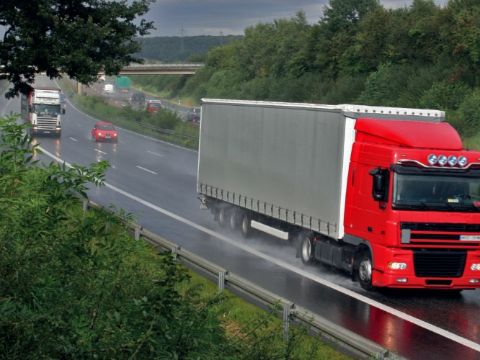Mounting a truck tyre
Truck tyres are always mounted once rims have been removed from the truck or trailer. Transporters must take the rim and tyre to a specialist who possesses the required equipment. Or the specialist could also visit them, in the same way as specialists at the Profile Tyrecenter. These days, the new tyre will almost always be a tubeless tyre, which means a tubeless rim should be used.
Once the old tyre has been removed from the rim, and the valve has been taken out, the new tyre can be mounted in several steps. The tyre specialist will take the following steps:
- visually inspect the rim;
- clean the flanged edge using a steel brush;
- possibly remove an rusty spots;
- remove all dust;
- apply mounting or tyre grease equally on the edges of the rim and the tyre;
- match the outside of the tyre to the outside of the rim;
It is important to check the tyre's rotation direction before equipment is used to place the tyre on the rim. Some tyres feature markings which indicate the (mandatory!) rotation direction. This is sometimes indicated using an arrow and sometimes with the word ‘outside’ (if the profile is asymmetric). However, in case of twin wheels, it is equally important to follow the manufacturer's mounting instructions.
Once everything has been checked, the specialist will place the tyre against the rim and mount it using special tyre-mounting equipment. This will be done without applying too much pressure, so the casing is not damaged in any way.
The tyre will then be inflated. This will involve placing the tyre into an approved tyre cage (for safety!) before it is inflated. This will be done at circa 1.5x normal pressure (in bar; up to maximum 10 bar), so the tyre grips effectively against the rim. The specialist will then:
- insert a new valve into the valve opening;
- release air from the tyre until operating pressure is reached,
- check if the tyre has been correctly mounted around the entire circumference.
The final step involves placing the tyre and rim on the balancing machine.
The specialist will first perform a visual inspection to make sure there are no abnormalities when the tyre rotates. If abnormalities are encountered during the visual check, which also involves checking dimensions, the tyre will always be removed and re-mounted.
The balancing machine will then show if and where (on the inside or outside) counter-weights need to be placed in order to balance the tyre and wheel rim. This will help to prevent vibration, unnecessary fuel consumption and improper and excessive wear & tear.
Like to know more?
Do you need advice? Please contact us, our experts will be pleased to assist you. Contact our experts at +31 (0)523 - 850 850 or by e-mail to info@heuver.com. You can also read all about trucks on the truck knowledge-page.

